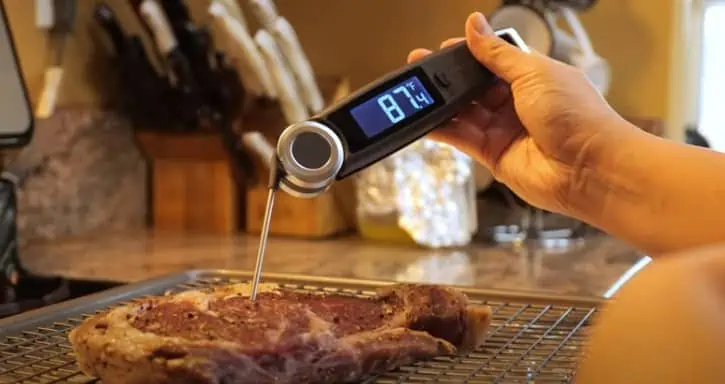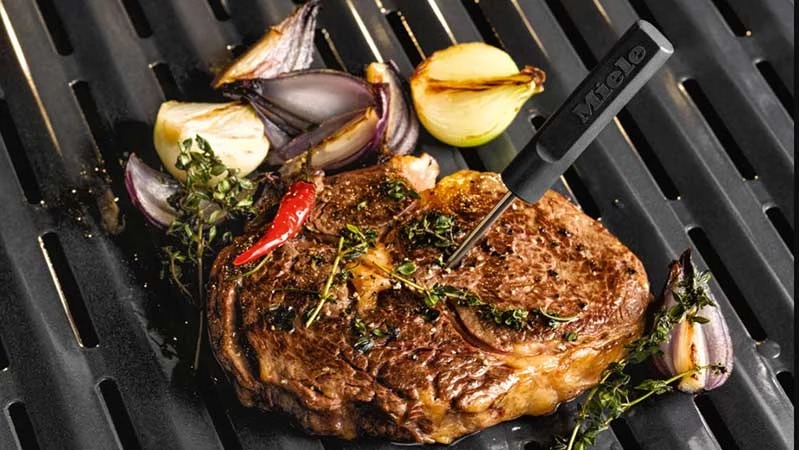Cooking a Boston butt to perfection requires careful attention and the correct use of a meat thermometer. Understanding where to put meat thermometer in Boston butt is crucial for ensuring your barbecue or roast is both delicious and safe to eat. Lets explore the best tips and techniques for using your meat thermometer effectively.

What is a Boston Butt?
The term Boston butt can be confusing to some, but it simply refers to a cut of pork that comes from the upper part of the shoulder, including parts of the shoulder blade. It is known for its rich flavor and tenderness when cooked properly. This cut is a favorite for making pulled pork.

Why Proper Placement of the Thermometer Matters
When it comes to cooking any meat, internal temperature is a key indicator of doneness. This is particularly true with thicker cuts like Boston butt. Placing the thermometer in the wrong spot can give you inaccurate readings, leading to undercooked or overcooked meat.

Getting Started with Your Meat Thermometer
Choosing the Right Thermometer
There are various types of meat thermometers, including digital instant-read thermometers and leave-in thermometers. Choosing one that suits your cooking style is essential. For precise readings, a digital instant-read thermometer is often recommended.
Calibrating Your Thermometer
Before you begin, ensure that your meat thermometer is calibrated correctly. A poorly calibrated thermometer can lead to inaccurate readings.
The Correct Placement of the Thermometer
Why Internal Temperature is Critical
According to the USDA, pork should reach an internal temperature of at least 145F, followed by a resting period. For pulled pork, aim for a higher internal temperature of around 195F to 205F, where the connective tissue breaks down, and the meat becomes tender.
Where Exactly to Place the Thermometer
To get an accurate reading, insert the thermometer probe into the thickest part of the Boston butt, making sure it doesnt touch bone or fat. Bones conduct heat faster than meat, and fats can give you a false reading. Ideally, the probe should be in the center of the meat.
Tips for Accurate Temperature Readings
Avoiding Common Mistakes
One of the most common mistakes is inserting the thermometer too shallow or deep. The tip of the probe should be fully immersed in the meat but not so deep that it exits the other side.
Special Considerations for Large Cuts
For large cuts like Boston butt, rotating the meat halfway through cooking and checking the temperature in multiple spots can ensure an even cook.
Cooking Techniques for Boston Butt
Smoking
When smoking a Boston butt, keeping the smoker temperature steady and low ensures a slow, even cook. Maintain a smoker temperature of around 225F.
Slow Roasting
Slow roasting in the oven is another excellent method for cooking Boston butt. Set your oven to a low temperature and allow several hours for the meat to cook through.
Resting Your Boston Butt
Why Resting is Important
After cooking, its crucial to let the meat rest. This allows the juices to redistribute, making the meat more flavorful and moist.
Proper Resting Time
Cover the cooked Boston butt with foil and let it rest for at least 30 minutes. For larger cuts, an hour of resting time can be even better.
Additional Tips and Tricks
Using a Marinade
Marinating your Boston butt before cooking can add extra flavor and tenderness.
Ensuring Safety and Hygiene
Always use clean utensils and surfaces when handling raw meat to avoid cross-contamination.
Common FAQs
What is the best type of meat thermometer to use?
Digital instant-read thermometers are often recommended for their accuracy and ease of use.
Can I use a meat thermometer in a smoker?
Yes, meat thermometers, especially leave-in types, are very useful when smoking meats to monitor internal temperatures without opening the smoker.
How do I know when my Boston butt is done?
Your Boston butt is done cooking when it reaches an internal temperature between 195F and 205F for tender, pull-apart meat.
For more detailed guides and tips on cooking meat, check out this helpful resource.
Read more about microwaving rotisserie chicken or explore pairing it with sides to enhance your meals.
As an Amazon Associate, I earn from qualifying purchases.









